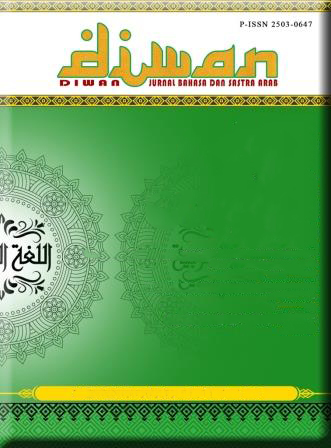الرسائل الإنسانية والجوانب الروحانية في نثر "الغني والفقير" لمصطفى لطفي المنفلوطي
DOI:
https://doi.org/10.24252/diwan.v11i1.55098Keywords:
Humanitarian Messages, Spiritual Aspects, Prose of “the Rich and the Poor", Mustafa Lutfi Al-ManfalutiAbstract
Al-Manfaluti expresses in his works, al-Nazarat, the problems that Egyptian society faces under the title "The Rich and the Poor". The research objective is: (1) to describe the human messages in the prose of “the rich and the poor”, (2) to describe the spiritual aspects in the prose of “the rich and the poor”. The research method employed in this article is a descriptive qualitative study, and its type is a library study. The sources of data include the prose of the rich and the poor, as well as books and scientific research related to the topic. The method of data analysis involves identifying the data, describing its characteristics, analyzing these characteristics, providing a comprehensive explanation, and extracting the results. Regarding the research results, the researcher found that the human messages in the prose of the rich and the poor consist of four types: the relationship between man and God, human relations, the relationship between man and the environment, and the relationship between man and himself. As for the spiritual aspects in the prose of the rich and the poor, they consist of nine types: the transcendent dimension it, the meaning and purpose in life in it, the mission of life in it, the sanctity of life in it, material values in it, altruism in it, idealism in it, awareness of tragic events in it, and the fruit of spirituality in it.
Downloads
References
Abedin, Joynal, and Abdul Rasak T, ‘Contribution of Mustafa Lutfi Al-Manfaluti to Arabic Short Story: A Critical Study’, 2015
Currier, Elizabeth M, The Personal Implications of Proverbs: Wealth and the Rich, Poverty and the Poor (The University of Wisconsin-Madison, 2020)
Elkins, David N, and others, ‘Toward a Humanistic-Phenomenological Spirituality: Definition, Description, and Measurement’, Journal of Humanistic Psychology, 28.4 (1988), pp. 5–18






